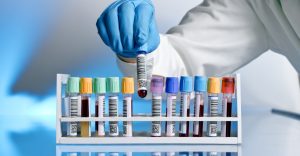In early 2024, U.S. authorities announced that several companies would begin reducing PFAS and BPA in their products.
Others are reading now
When Linda Birnbaum, former director of the U.S. National Institute of Environmental Health Sciences, decided to remove nonstick pans from her kitchen, it was because of a health concern that’s increasingly affecting consumers worldwide.
PFAS and Other Chemicals
Nonstick cookware, once valued for convenience, often contains PFAS—synthetic chemicals known for their resistance to heat and grease but also flagged as “potentially harmful to health and the environment,” according to El Economista.
PFAS, or per- and polyfluoroalkyl substances, belong to a large family of chemicals with over 15,000 variants.
These substances are found in everything from kitchen utensils to household items, which has raised concerns about widespread exposure.
Also read
Known for their strong carbon-fluorine bonds, PFAS are incredibly durable, resisting breakdown both in use and in the environment, where they can spread far from their source.
The impact of PFAS on human health is still under debate. While the CDC acknowledges that more research is needed, some animal studies suggest PFAS could negatively affect reproduction, immunity, and liver function.
PFAS aren’t the only concern — other chemicals, like bisphenol A (BPA), are also suspected to pose health risks, including hormone disruption and an increased risk of reproductive issues.
Don’t Expose Yourself
Birnbaum explained her decision, stating, “I no longer use them because I don’t want to expose myself to these things.”
She noted that consumers often learn about these potential threats only after years of exposure.
Beyond nonstick cookware, Birnbaum cautions against other common items with PFAS, such as plastic kitchenware and food packaging, including pizza boxes and microwave popcorn bags.
“People who eat more fast food tend to have higher PFAS levels,” she added, underscoring the pervasive nature of these chemicals.
Despite rising awareness, regulatory measures are slow. In early 2024, U.S. authorities announced that several companies would begin reducing PFAS and BPA in their products.
However, these chemicals have so permeated the environment that contamination of food and water remains a major issue, regardless of packaging choices.
“It’s impossible to avoid these chemicals entirely,” says Tasha Stoiber, a scientist with the Environmental Working Group, stressing the need for broader policy changes.
Experts recommend opting for cookware made from glass, carbon steel, or cast iron as safer alternatives to nonstick pans.
They also advise avoiding plastic in the microwave and reducing fast food consumption. Yet, product labeling can be misleading, as substitutes for harmful chemicals are sometimes just as problematic, leaving consumers to navigate complex safety concerns in the kitchen.








